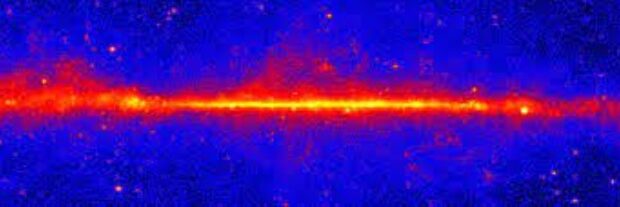The most potent form of light, gamma rays pose a serious threat to all living things. In addition to and around strong astronomical events and bodies like black holes, pulsars, and supernovae, they can form in nuclear reactions. For the past fifteen years, NASA’s Fermi spacecraft has been studying the universe through the lens of gamma rays, which provides a window into these extremes.
From August 2008 to August 2022, the telescope used its Large Area Telescope (LAT) to scan the entire sky every day. Two scientific points of view are presented in the video below. One is composed of two hemispherical views, with our galaxy at the edges, while the other concentrates on the Milky Way’s plane at its center. The former aids in the study of events that occur closer to home, while the latter deals with events that occur in other galaxies.
The Milky Way band’s variations in intensity are typically the result of data collection artifacts, but there are some galactic variations that are important to note. Among them are pulsars, a specific kind of pulsating neutron star.
Additionally, our Sun is visible in this timelapse, moving mainly silently until a flare is released. The amount of energy released by these events is demonstrated by the one from November 2017, which was the brightest we’d had in the previous six years until last week. The energy of gamma rays is 100 million times greater than that of visible light.
“One of the first things to strike your eye in the movie is a source that steadily arcs across the screen. That’s our Sun, whose apparent movement reflects Earth’s yearly orbital motion around it,” according to a statement released by NASA’s Goddard Space Flight Center’s Judy Racusin, a deputy project scientist.
While narrating the film, Racusin highlights some of the objects visible through the telescope and explains the science behind it. Among the targets for extragalactic observations are the jets from supermassive black holes, and the scientists are especially excited when these sources change in intensity.
“The variations tell us that something about these jets has changed,” stated Racusin. “We routinely watch these sources and alert other telescopes, in space and on the ground, when something interesting is going on. We have to be quick to catch these flares before they fade away, and the more observations we can collect, the better we’ll be able to understand these events.”
We anticipate many more years of data from the highest energies in the universe because Fermi is still going strong.




